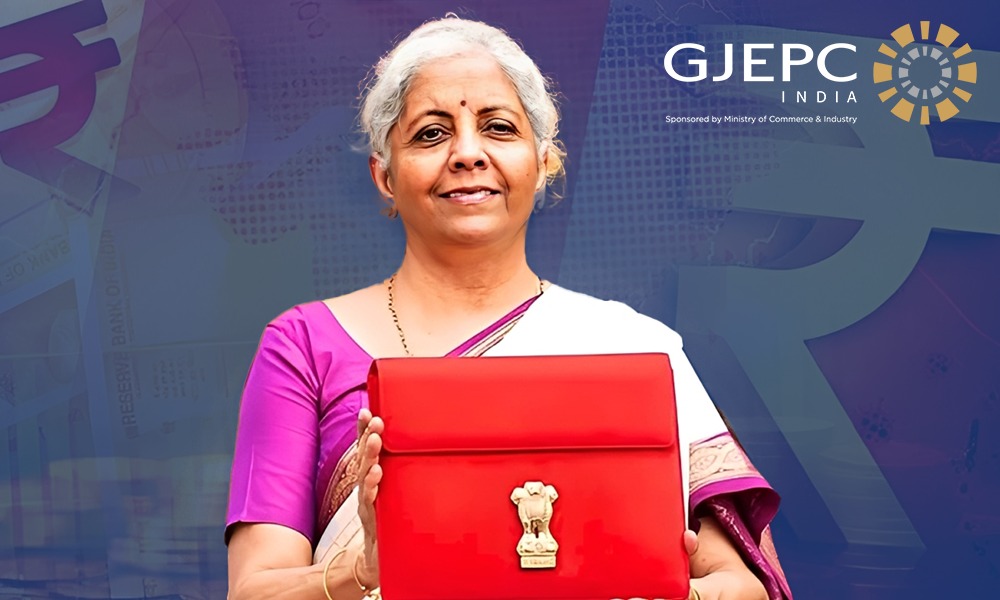National News
Outstanding bank loans against gold more than doubled in a year

In an unexpected divergence within India’s financial system, the fiscal year ending March 2025 witnessed a dramatic surge in gold-backed loans, even as overall credit growth decelerated. According to Reserve Bank of India (RBI) data, loans against gold more than doubled, rising by 103% from just over ₹1 lakh crore to nearly ₹2.1 lakh crore. This made gold loans the fastest-growing segment in the Indian credit market, outpacing all other lending categories.
This sharp growth in gold-backed lending occurred against the backdrop of slowing overall bank credit, which grew at 11% in FY25, down from a robust 20% in FY24. The contrast highlights both the resilience of asset-backed borrowing during times of economic strain and the evolving financial preferences of Indian households and small businesses.
Three key factors drove this boom:
- Regulatory Reclassification by the RBI: In 2023, the RBI issued a directive requiring banks to reclassify many agricultural loans as loans against gold jewellery. This not only improved transparency but also artificially inflated the category’s growth figures. Banks traditionally prefer to label rural gold loans as agricultural credit to take advantage of lower interest rates and lenient repayment norms attached to farm lending.
- Shift from NBFCs to Banks: Another major catalyst was the RBI’s move to curb gold lending by large non-banking financial companies (NBFCs), which had become dominant players in the sector. With regulatory limits in place, borrowers—especially those in rural and semi-urban areas—began shifting back to traditional banks for their gold loan needs.
- Gold Price Appreciation: The continued rise in gold prices significantly boosted the borrowing capacity of individuals. Since loans are typically offered as a percentage of the gold’s market value, higher prices meant that customers could secure larger loan amounts without pledging more jewellery.
The explosion in gold loan volumes reveals much about the Indian financial ecosystem. On the one hand, it suggests increased financialisation of household assets, particularly gold, which has long been a preferred store of wealth in Indian society. On the other hand, it points to underlying financial stress, as households appear to be leveraging personal assets to meet liquidity needs in a slowing economy.
At a systemic level, the phenomenon underscores the interplay between regulatory decisions and credit flows, demonstrating how RBI’s interventions can redirect borrowing channels. While the gold loan segment soared, the broader deceleration in credit—from 20% to 11% year-over-year—raises concerns about investment appetite and consumption momentum, especially in key sectors like industry, infrastructure, and MSMEs.
National News
GJEPC Presents Pre-Budget Recommendations to Boost Exports and Ease of Doing Business

The Gem & Jewellery Export Promotion Council (GJEPC) submitted its set of pre-budget proposals to the Government of India in New Delhi on 7th November, aimed at enhancing the ease of doing business and driving export growth.
The delegation, led by Kirit Bhansali, Chairman, GJEPC, along with Anoop Mehta, Convener, Diamond Panel; K. Srinivasan, Convener, Gold Panel; and Sabyasachi Ray, Executive Director, GJEPC, presented key recommendations addressing critical industry needs.
Among the major proposals were a liberalised taxation framework for rough diamond trading in Special Notified Zones—aligned with international hubs such as Israel, Dubai, and Belgium—and an extension of customs duty exemption on lab-grown diamond seeds beyond March 2026, to support India’s rapidly expanding LGD sector.
GJEPC also sought retrospective applicability of the ±0.01 mm height variance rule (2014–2025) for re-imported diamonds sent for certification and grading, ad-valorem duty drawbacks for gold and silver, and the inclusion of platinum jewellery and gold articles in the drawback scheme.
To attract foreign tourists, the Council recommended a comprehensive tax refund mechanism covering GST, Basic Customs Duty, and Agriculture Infrastructure and Development Cess (AIDC), supported by digital integration and refund counters at airports.
Further proposals included greater flexibility for SEZs—allowing reverse job work, domestic sales on duty payment, and “Bill to, Ship to” procurement—to streamline logistics.
GJEPC also urged the reduction of import duty on cut and polished diamonds and coloured gemstones from 5% to 2.5%, abolition of duty on rough gemstones, and enhancement of personal carriage limits for overseas exhibitions and business tours.
Highlighting industry challenges, the Council appealed for relief from transfer pricing penalties under Section 271(6), citing the industry’s thin profit margins and established judicial precedents supporting its compliance approach.
-

 GlamBuzz1 week ago
GlamBuzz1 week agoKushals Fashion and Silver Jewellery shines bright with Sanya Malhotra as its Brand Ambassador in the North and Priyanka Mohan in the South
-

 GlamBuzz24 hours ago
GlamBuzz24 hours agoTamannaah, Samantha, and Janhvi Kapoor Dazzle in Stunning Jewellery and Couture Moments
-

 National News22 hours ago
National News22 hours agoANOR Redefines Luxury: Pioneering Premium Lab-Grown Diamond Jewellery for India’s Elite
-

 BrandBuzz3 days ago
BrandBuzz3 days agoWhen your Love Speaks its own Language, Seal it with Platinum Love Bands











